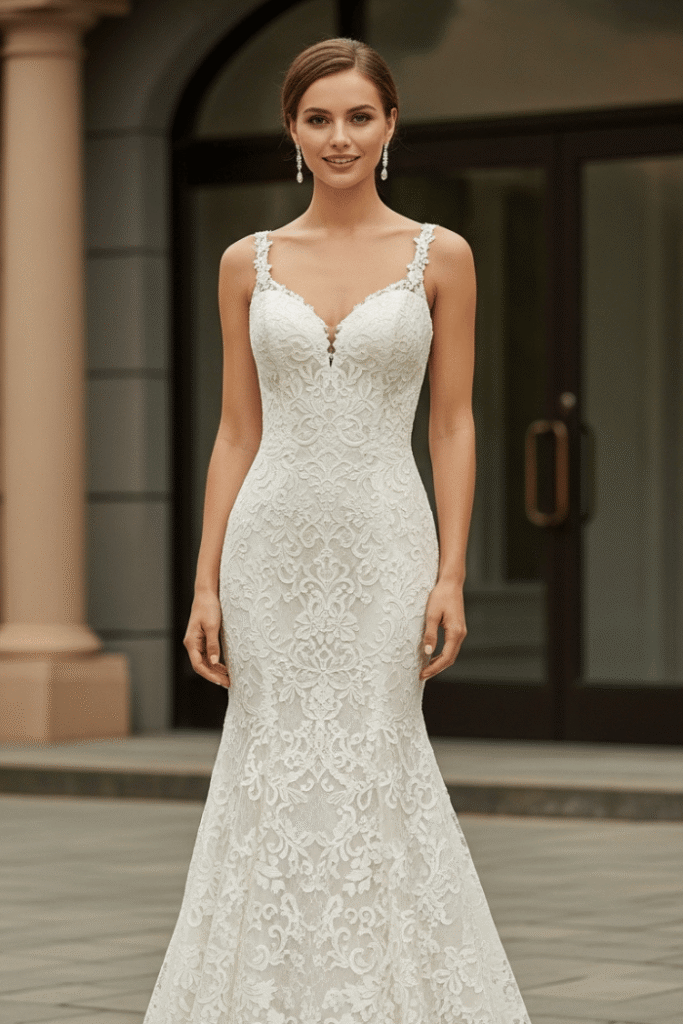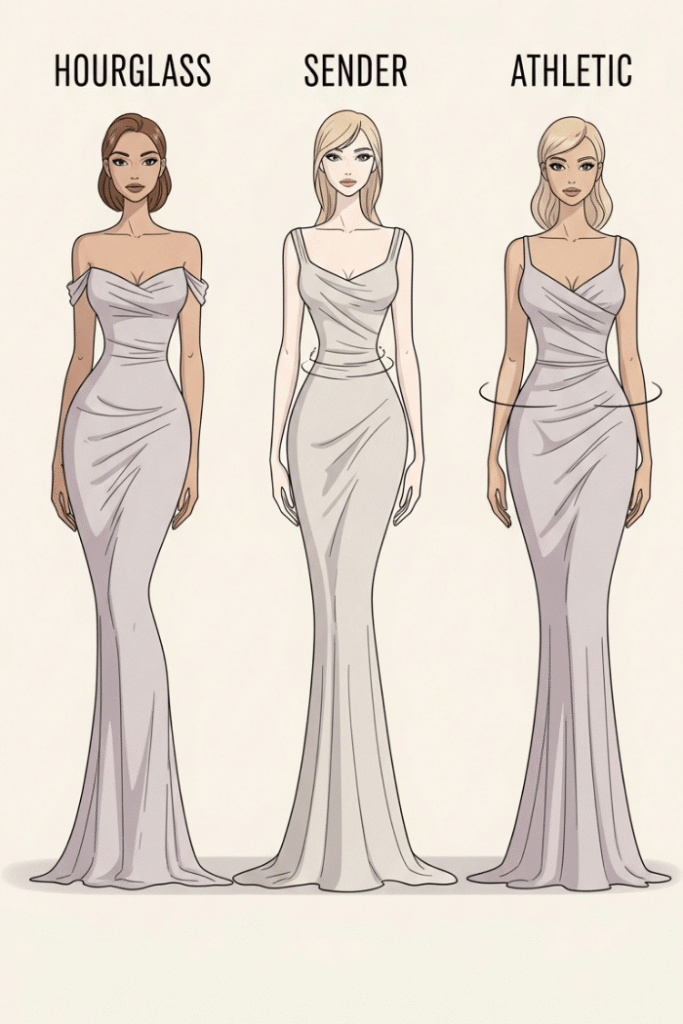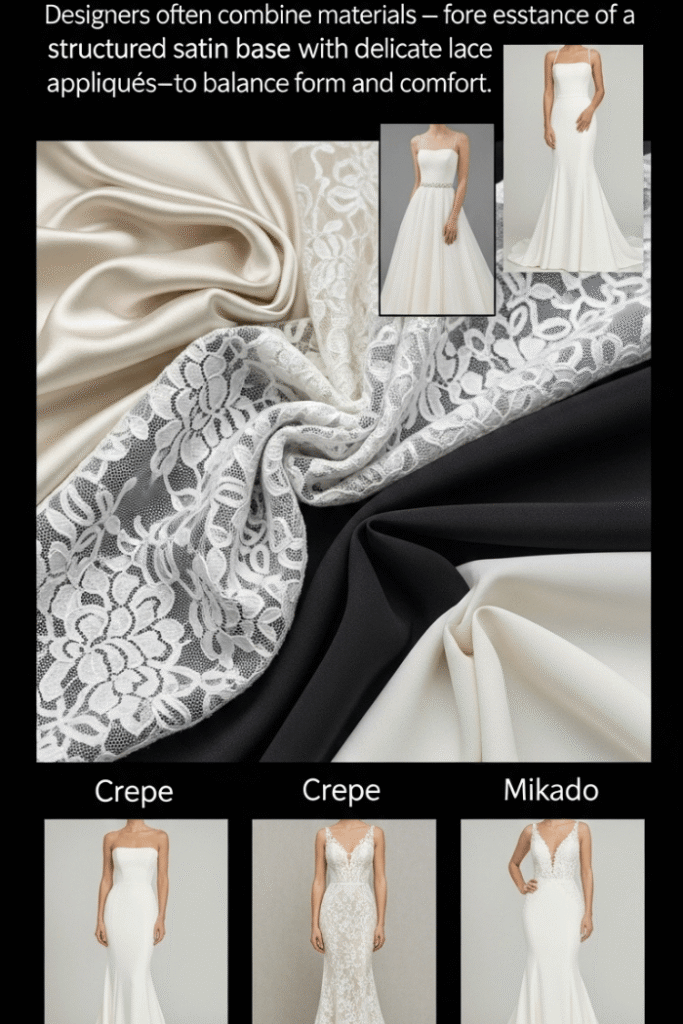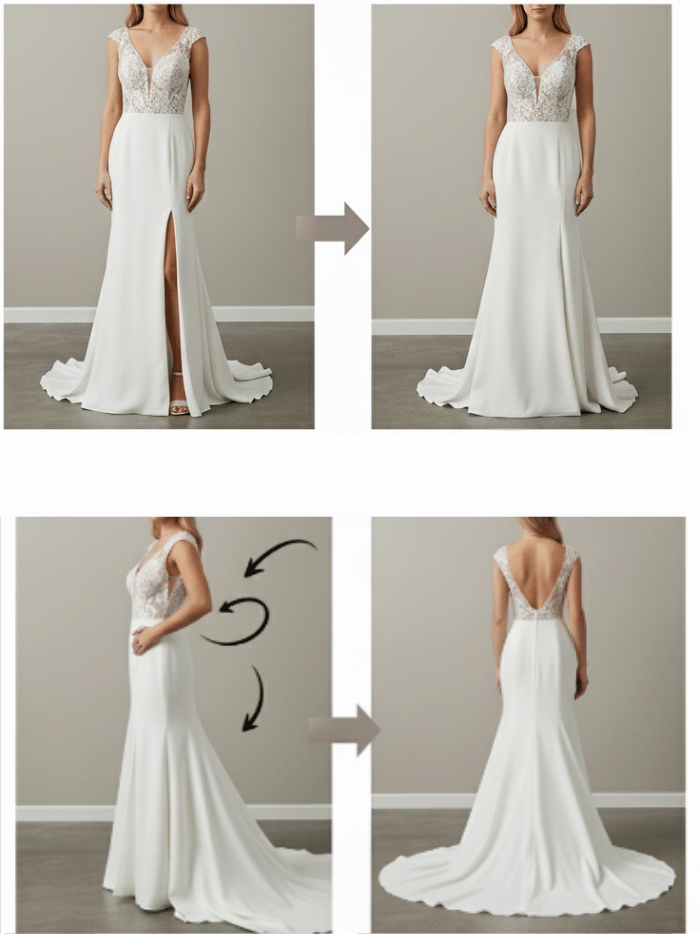Mermaid Wedding Dress — Definition, Fit, and Style Guide
The mermaid wedding dress is one of the most dramatic and curve-enhancing silhouettes in bridal fashion. Loved by confident brides, it hugs the bodice, waistline, and hips before flaring out below the knees into a fishtail skirt. This shape creates an elegant hourglass effect and adds Hollywood-style glamour to any ceremony.
Modern mermaid gowns use satin, lace, tulle, or organza, often with appliqué, beading, or embroidery, to combine structure with romance. Designers like Maggie Sottero and Rebecca Ingram have popularized variations that include corseted bodices, horsehair hems, and dramatic trains, ensuring the silhouette is both visually striking and fashion-forward.
Brides choose mermaid dresses for weddings in chapels, ballrooms, or outdoor venues, seeking a gown that emphasizes elegance while celebrating confidence.

What Is a Mermaid Wedding Dress?
A mermaid wedding dress features a fitted bodice, waist, and hips that flare out just below the knees. This shape emphasizes the body’s natural curves and offers a dramatic, red-carpet-style finish. Unlike the trumpet silhouette, which begins its flare mid-thigh, the mermaid design keeps its tight contour lower, creating a more defined and sculpted look.
Fit and Movement
Because the mermaid style fits snugly through the hips and thighs, movement can be more restricted than in A-line or sheath gowns. Many designers now add stretch fabrics or subtle slits to improve mobility while keeping the sleek silhouette intact. Brides who plan to dance or move frequently during the reception often prefer versions with lighter materials or detachable overskirts for comfort.

Best Body Types for Mermaid Dresses
The mermaid silhouette is ideal for brides with an hourglass figure, as it highlights balanced proportions between the bust and hips. However, it can also create curves for slender or athletic body types. The key lies in proper tailoring and structure—boning, cups, and fitted seams help shape and support the figure for a smooth, elegant finish.

Fabrics and Structure
Common fabrics used for mermaid wedding dresses include satin, lace overlays, crepe, and mikado. Satin and Mikado give the gown structure and a luxurious sheen, while lace and crepe provide flexibility and softness. Designers often combine materials—for instance, a structured satin base with delicate lace appliqués—to balance form and comfort.
Pros and Cons of Mermaid Wedding Dresses
Pros:
- Accentuates curves and defines the waistline
- Creates a glamorous, statement-making silhouette
- Pairs beautifully with dramatic trains and veils
Cons:
- Can limit movement during walking or dancing
- May require alterations for comfort
- Less forgiving for brides seeking a looser fit

Alteration and Styling Tips
For easier movement, consider adding a side slit, stretch lining, or hidden zipper vent at the back of the flare. Pair the mermaid gown with heels that complement posture and maintain the gown’s length balance. During fittings, practice walking and sitting to ensure comfort throughout the ceremony and reception. Brides who love versatility can also opt for a mermaid dress with a detachable train for a quick transformation between ceremony and party.
Conclusion
The mermaid wedding dress combines elegance, structure, and sensuality in one unforgettable design. Its signature flare below the knee makes it a timeless choice for brides seeking sophistication with an edge. Whether made from sleek satin or romantic lace, this silhouette celebrates confidence and femininity at its finest.
FAQ
What is a mermaid wedding dress?
A mermaid wedding dress is a fitted gown that hugs the body from the bodice to the knee, then flares out, creating a fishtail shape.
Who looks best in a mermaid wedding dress?
This silhouette suits brides with hourglass or slender body shapes, but tailored versions can flatter many figures.
What fabrics work best for mermaid gowns?
Structured fabrics like satin or mikado highlight curves, while lace and crepe offer flexibility and softness.
Can I dance in a mermaid dress?
Yes, if it’s tailored with a slit or stretch fabric. Brides who plan an active reception may prefer fit-and-flare variations for added comfort.

Sophia Lane is a dedicated bridal fashion writer and wedding style consultant with over a decade of experience in helping brides-to-be discover their dream gowns. With a background in fashion journalism and bridal styling, Sophia specialises in writing detailed, research-driven guides on wedding dress styles, fabrics, accessories, and bridal trends.
Her work blends in-depth fashion knowledge, cultural research, and practical advice, ensuring brides receive content that is both inspiring and actionable. She has studied wedding dress history across cultures, analysed emerging eco-friendly bridal trends, and regularly collaborates with designers to stay updated on the latest collections.
Expertise
-
Wedding dress styles, fabrics, and silhouettes
-
Body-shape based bridal styling (petite, plus size, tall, maternity)
-
Sustainable and eco-friendly bridal fashion
-
Bridal accessories, tailoring, and preservation techniques
-
Global cultural wedding attire traditions







